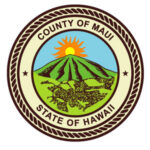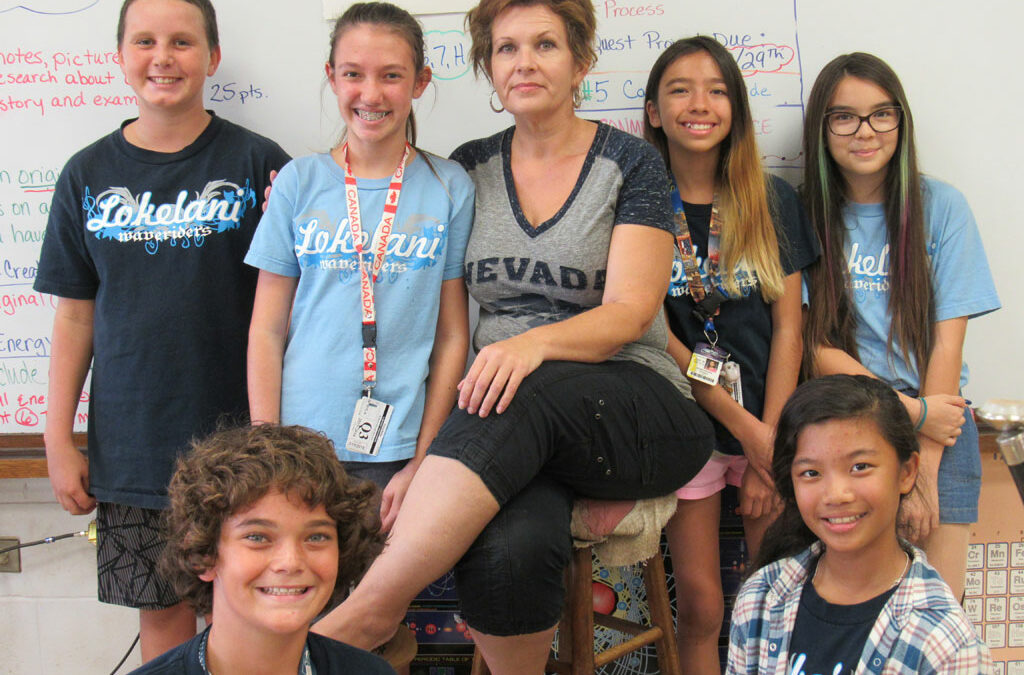
Feb 11, 2016 | Environment, Sustainability

For the first time, Maui Economic Development Board’s (MEDB) Women In Technology (WIT) Project is presenting a student collaboration opportunity between Hawaii and California. Kamali’i Elementary School, Lokelani Intermediate and Kihei Charter High School on Maui, together with Elliott Ranch Elementary School and Cosumnes Oaks High School in California, have chosen their most environmentally conscious students to participate in The Pacific Clean Energy Exchange. “In an effort to inspire creativity and collaboration with their counterparts, the students will explore, via conference calls and digital sharing, clean energy solutions both in the Golden State and the Aloha State,” said Lesley Brashier, Elliott Ranch Elementary School teacher. “Plus, leadership and management skills will be practiced by the high school students who are mentoring younger student teams in fourth, fifth and sixth grades.”
The students will work together to synthesize their findings for a presentation at the MEDB Hawaii STEM (Science, Technology, Engineering and Mathematics) Conference on May 6-7, 2016. “The Pacific Clean Energy Exchange Program is the first of its kind,” said MEDB WIT Project Manager Melinda White. “Elementary and high school students are being tasked with exploring solutions for the global energy crisis. They’ll be contributors to a relevant world issue being tackled by the brightest scientists, engineers and political leaders.”
The discussions in this program are very diverse. How can renewable energy be better integrated into city planning? How can citizens be encouraged to utilize clean energy like solar, wind, ocean wave and tidal action when available? Are there more energy sustainable ways to cool the schools? In the culminating event, California and Hawaii teams will be able to meet in person when they offer their innovative ideas and solutions at the STEM Conference. “The Pacific Clean Energy Exchange is giving my students a chance to learn about the significance of Hawaii’s 100% renewable energy goal,” said Zayna Stoycoff, Lokelani Intermediate School teacher. “As one of my students recently explained, ‘No one individual can possibly make every contribution, but by coming together great goals can be reached.’ As a teacher, this is what it’s all about!”
The Pacific Clean Energy Exchange project is a one-of-a-kind STEM opportunity that joins students from Hawaii and California to collaborate on clean energy issues. I very much wanted to be part of this project to learn more about environmental science and hopefully contribute to Hawaii’s future.
Cole Logrande, Lokelani Intermediate School 6th grader
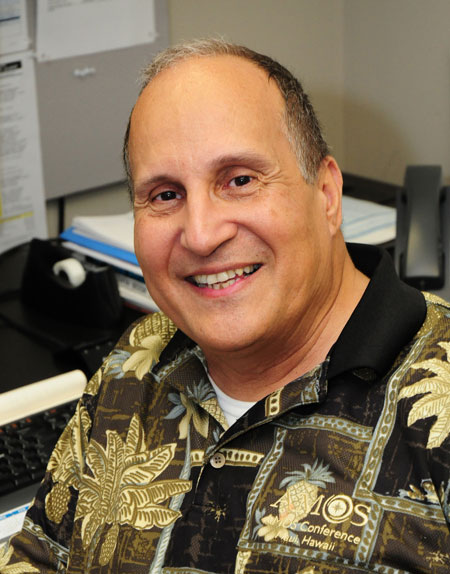
Jan 28, 2016 | Environment, Events, Small Business, Sustainability
The Mayor’s Office of Economic Development, Maui County and Maui Economic Development Board (MEDB) are hosting the third annual Maui Energy Conference, March 16-18 2016 at the Maui Arts & Cultural Center. Energy experts and stakeholders from across the U.S. and Hawaii will meet to learn about the latest advances in clean energy and how Hawaii plans to achieve the new 100% RPS (Renewable Portfolio Standard) target. On June 8th 2015, Hawaii updated legislation setting the 100% renewable portfolio standard by 2045. The standards are state and local policies that mandate all or certain types of electricity producers to supply a minimum share of their electricity from designated renewable resources. Hawaii has met its annual RPS requirements to date.

Frank De Rego, Jr. Director of Business Development Projects, Maui Economic Development Board, Inc.
“The 2016 Maui Energy Conference will bring together some of the best minds in the energy sector from Maui County, the state, and the nation,” said Frank De Rego, Jr., MEDB Director of Business Development Projects and member of the conference program committee. “The focus of discussion will be Hawaii Clean Energy Initiative’s 100% RPS and its implications for Hawaii’s energy future. The strengths of the conference over the years have been the high quality of its speakers and panelists, the ample time to network and the availability of the panel sessions to the general public at the conclusion of the conference on the conference website.”
The Conference will seek consensus about realistic targets and goals, the readiness of the utilities to reach them and how much this will really cost. Other issues include how to mitigate disruptions of energy supply and price when transitioning from carbon based fuels to renewables and the importance of a diversified portfolio. Looking at all the other questions: How; Where; Why; and Who Pays are just a few of the obvious issues. “Within ‘how’ and ‘why’ are important sub-questions about fairness and respect for Hawaiian culture and the environment,” said Program committee chair, Doug McLeod, DKK Energy Services. “In addition, the County of Maui’s energy consultant Guernsey has been invited to present their recommendation with regard to ownership of the electric utility on Maui.”
An early-bird registration rate of $395 for the Maui Energy Conference is available through January 31st — a discount of $100. Details on this year’s program are available at the Conference website, MauiEnergyConference.com
Frank De Rego, Jr. Director of Business Development Projects, Maui Economic Development Board, Inc.

Jan 21, 2016 | Education, Environment, Sustainability

Since 2009, the Maui Economic Development Board (MEDB) Women In Technology program (WIT) has trained 459 educators through the energy science curriculum of its Island Energy Inquiry (IEI) initiative. In that time it has expanded from Maui across the state, reaching at least 49,000 students. IEI is the first energy education program designed for Hawaii teachers that combines scientific inquiry and engineering design processes with cutting-edge materials and technologies in the classroom. Teachers are using this new knowledge and hands-on activities to help middle and high school students learn about and perhaps someday solve the state’s energy concerns. “Through the IEI workshops, our MEDB team helps teachers educate for energy prosperity,” said Graham R. DeVey, WIT Project Manager. “Our hands-on, student-driven labs and activities use the natural curiosity of students to develop their skills for tomorrow’s high-tech jobs in renewable energy here in Hawaii.”
In recent Maui workshops for teachers of grades K through 5, WIT Project Assistant, Manda Tong supported the educators in an IEI electromagnetic motor lab, building the foundational concepts used in engineering wind and hydro generators. “In IEI courses, teachers learn as students do, by applying scientific skills through a hands-on approach,” Tong explained. The workshop series, focusing on photovoltaic electricity, wind energy, solar thermal energy and energy efficiency, incorporated presentations from local engineers and other industry representatives on various energy topics. Participating teachers also received hands-on kits to take back to the classroom, including miniature PV modules, a four-foot wind turbine and energy auditing equipment. WIT’s IEI Program, in partnership with Ka Hei, a Department of Education Program, also includes comprehensive energy efficiency and water conservation initiatives, sustainability measures, microgrids, science, technology, engineering and math (STEM) curriculum and community involvement.
To augment the IEI curriculum and make it more tech-relevant to teens, a companion Clean-Energy Hawaii STEM iPad app has been created by NSC Partners LLC, a Maui-based software developer. The app is available at the iTunes store and features Hawaii-specific clean energy content that can be adapted to support innovative energy science education in any community throughout the world.
Maui Economic Development Board’s Women In Technology Island Energy Inquiry Program (IEI) launched its elementary school curriculum this past fall, training 35 teachers of grades K through 5 to teach clean energy modules. The IEI program helps build student competency towards energy prosperity for Hawaii’s future.
Manda Tong, MEDB Project Assistant

Nov 12, 2015 | Environment, Sustainability
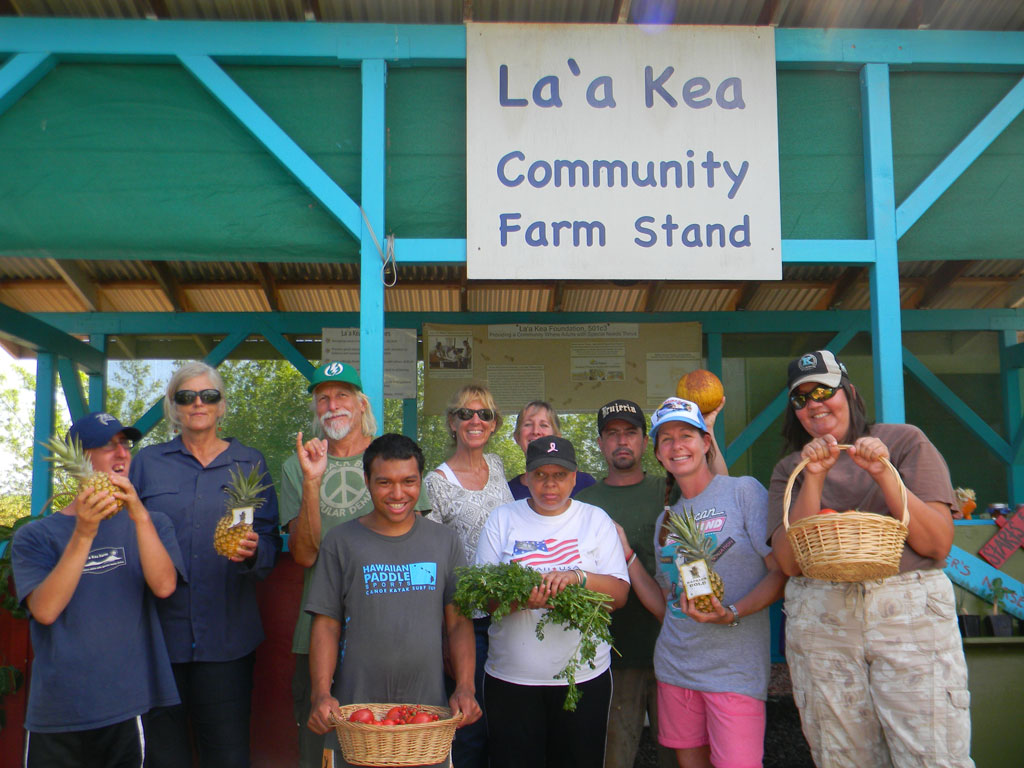 Imagine a place where the community reflects what is important and precious in each member. Imagine a place where the meaningful work that each individual contributes to the community is healing and inspirational. La‘a Kea Farm on Baldwin Avenue in Pa‘ia is that place. Sitting on 12 acres overlooking the ocean, with double rainbows and majestic white clouds, the farm inspires residents and visitors alike. Founded in June 2000, La‘a Kea, a 501(c)(3) nonprofit organization, provides day and residential programs for youth and adults with intellectual and developmental disabilities. It is the first of its kind in the State of Hawai‘i.
Imagine a place where the community reflects what is important and precious in each member. Imagine a place where the meaningful work that each individual contributes to the community is healing and inspirational. La‘a Kea Farm on Baldwin Avenue in Pa‘ia is that place. Sitting on 12 acres overlooking the ocean, with double rainbows and majestic white clouds, the farm inspires residents and visitors alike. Founded in June 2000, La‘a Kea, a 501(c)(3) nonprofit organization, provides day and residential programs for youth and adults with intellectual and developmental disabilities. It is the first of its kind in the State of Hawai‘i.
“Our mission is to create wholeness through education and therapy in extended family living,” said La‘a Kea Executive Director Andrea Hall Rodgers. “Being part of a thriving ‘ohana enables the members to fully unfold their potential and inspire each other. La‘a Kea’s programs include farming, economic ventures and the activities of daily living that come alive in a community with homes, farm buildings, a farmers’ market, cafe, craft studio and more,” said Rodgers. Inspired by the internationally known Camphill Village model, La‘a Kea offers a unique alternative to conventional care. Co-workers, residents and day program participants, regardless of their ability or disability, work in a supportive environment. They are all dedicated to discovering and enhancing the contribution of each individual through productive work.
In 2005, Rodgers presented the La‘a Kea project to Maui County Mayor Alan Arakawa. “It is an exceptional model of organic farming and equitable community living designed specifically for the special-needs community,” she told the mayor. Recognizing the critical need for a community serving one of our most overlooked populations, Mayor Arakawa arranged the first long-term lease ever given to a nonprofit in the history of Maui County.
“During my first administration we realized there was a gap of service when it came to assisting adults, over 18 years old, with physical and mental challenges,” said the mayor. “I am very happy we have programs like La‘a Kea and others that care for our most vulnerable island residents.”
La‘a Kea Farm is an exceptional model of organic farming and equitable community living designed specifically for the special-needs community.
Everyone is invited to the 5th annual La‘a Kea Farm Fall Family Festival and Pie Contest on Sunday, November 15th, 2015 from noon to 4 pm. The event includes food and fun for the entire family with live music, tractor rides, silent auction and more.
Andrea Hall Rodgers, La‘a Kea Executive Director
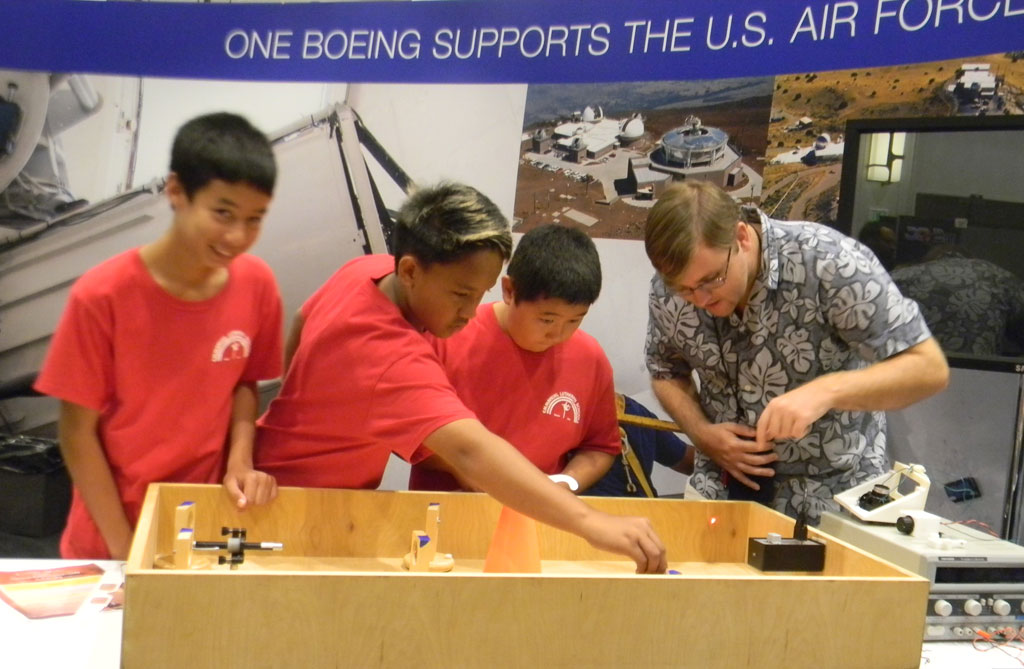
Oct 9, 2015 | Environment, Events
 The 16th annual Advanced Maui Optical and Space Surveillance Technologies Conference (AMOS) was held in September in the culturally rich setting of the Wailea Marriott Resort and Spa. Presented by Maui Economic Development Board and numerous sponsors, the four-day event is known as the top scientific conference in the field of optics and imaging for the surveillance of space. The conference brought together scientists from around the world to offer updates and assessments of current research in the fields of space situational awareness (SSA), space weather and related specialties in astronomy. SSA refers to knowledge of the space environment and the natural and man-made objects in orbit around the Earth.
The 16th annual Advanced Maui Optical and Space Surveillance Technologies Conference (AMOS) was held in September in the culturally rich setting of the Wailea Marriott Resort and Spa. Presented by Maui Economic Development Board and numerous sponsors, the four-day event is known as the top scientific conference in the field of optics and imaging for the surveillance of space. The conference brought together scientists from around the world to offer updates and assessments of current research in the fields of space situational awareness (SSA), space weather and related specialties in astronomy. SSA refers to knowledge of the space environment and the natural and man-made objects in orbit around the Earth.
The Boeing Company, AMOS’s main sponsor, recognizes the need for the future generation to get involved in all areas of space exploration and technological solutions. “Our Global Corporate Citizenship program, which originated on Maui in 2005, continues to contribute to community educational and environmental programs,” said Jerry Cornell, Boeing Site Executive. “AMOS provides a great opportunity for our Boeing experts to engage with Maui County students.”
The students, introduced to space technologies via exhibits and hands-on projects, had the opportunity to meet industry professionals and learn valuable lessons in science, technology, engineering and math subjects. “I learned so much at AMOS and the Boeing exhibits,” said Raider Howard, Lokelani Intermediate 8th grader. “Satellites continue to make a big impact on our community and in the world. We need new technology now and in the future for national security, internet, banking, telephones, television, navigation, scientific exploration and more.”
At Boeing’s simulated optics exhibits, students learned how light is transmitted from the collection points of the large 3.6-meter Haleakala summit telescope, via mirrors to an engineered optics table. Students were tasked to redirect light from a pen laser source, using up to five mirrors, onto moveable pucks, and finally to an optic sensor that buzzed when the laser light touched it. A 3D-printed fast-steering mirror was installed on the simulated optics table, making the laser light bounce off the steering mirror first. That mirror had separate controls, so student teamwork was required to complete the assigned task. “The experiments at AMOS were really interesting,” said Howard. “I might want to be an astronomer.”
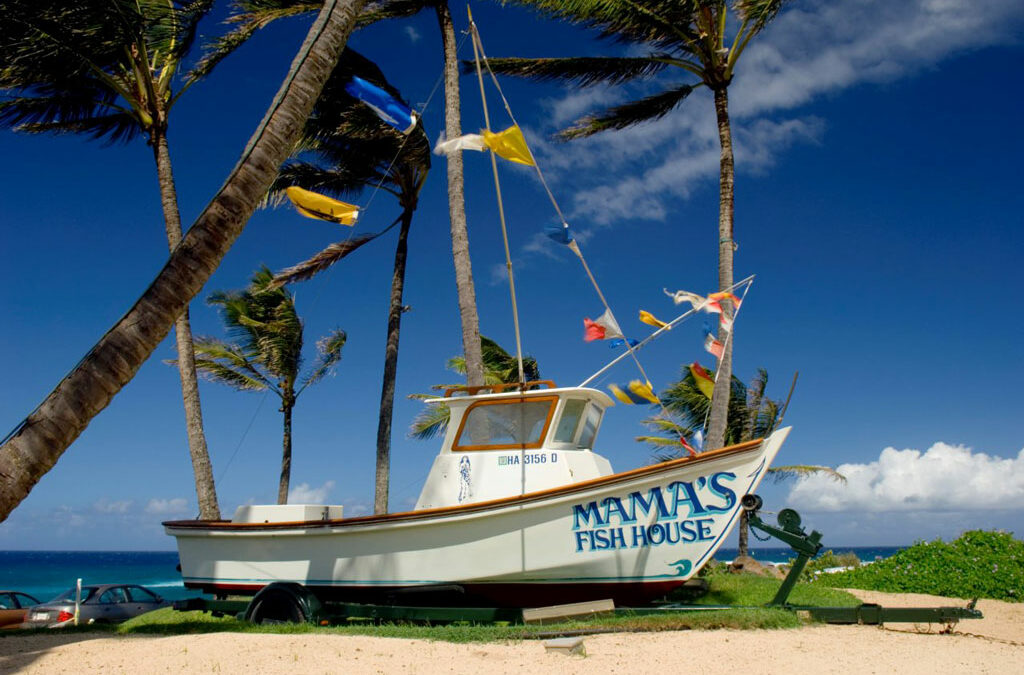
Sep 30, 2015 | Community, Environment, Sustainability
 Mama’s Fish House, family-owned by Floyd and “Mama” Doris Christenson, has been buying fish directly from Maui fisherman for over 40 years. These local fishermen, representing a way of life, culture and tradition in Hawai’i, consistently deliver the freshest and finest local Maui seafood. In May 2013, Mama’s Fish House, in cooperation with Maui fishermen and the Western Pacific Regional Fishery Management Council (Wespac), funded and deployed the first of two fishing buoys approximately 30 miles off the northeast shore of Maui. The buoys are technically called a Fish Aggregation Device (FAD) and are anchored to the seafloor at a depth of over 1500 ft. “They are located in deep, off-shore waters that are habitat for pelagic species such as tuna, mahi-mahi, ono, and billfish,” said Mama’s Fish House Marketing Director Karen Christenson. “The concept of a FAD is a small platform or skiff that is anchored to the ocean floor, with a GPS beacon for tracking,” Christenson explained. “The floating buoy attracts the fish, offering some protection for smaller fish that, in turn, attract larger predator fish.”
Mama’s Fish House, family-owned by Floyd and “Mama” Doris Christenson, has been buying fish directly from Maui fisherman for over 40 years. These local fishermen, representing a way of life, culture and tradition in Hawai’i, consistently deliver the freshest and finest local Maui seafood. In May 2013, Mama’s Fish House, in cooperation with Maui fishermen and the Western Pacific Regional Fishery Management Council (Wespac), funded and deployed the first of two fishing buoys approximately 30 miles off the northeast shore of Maui. The buoys are technically called a Fish Aggregation Device (FAD) and are anchored to the seafloor at a depth of over 1500 ft. “They are located in deep, off-shore waters that are habitat for pelagic species such as tuna, mahi-mahi, ono, and billfish,” said Mama’s Fish House Marketing Director Karen Christenson. “The concept of a FAD is a small platform or skiff that is anchored to the ocean floor, with a GPS beacon for tracking,” Christenson explained. “The floating buoy attracts the fish, offering some protection for smaller fish that, in turn, attract larger predator fish.”
“FADs have proven to be a successful sustainable food source while reducing transit times and fuel costs for fishermen,” said Mama’s Fish House Executive Chef Perry Bateman. While the State of Hawaii maintains a network of FADs across the islands with the objective of providing recreational fishing opportunities, Mama’s FAD is different. “It is the first buoy funded by a private business to support the fishermen and Wespac’s research,” Chef Perry said.
Recognizing that data collection is critical to ensuring sustainability for local Hawai’i fish stocks, Mama’s Fish House encourages fishermen to submit their catch reports to the State of Hawai’i and Wespac. “Having accurate reports is being pono, doing the right thing, and perpetuating our culture of fishing,” said Chef Perry. He added that all Hawai’i-licensed fishermen can fish at Mama’s Fish House funded buoys and sell their catch to anyone. “The goals of community FAD projects are to increase fishing opportunities and cooperative research, and to provide community benefits.”
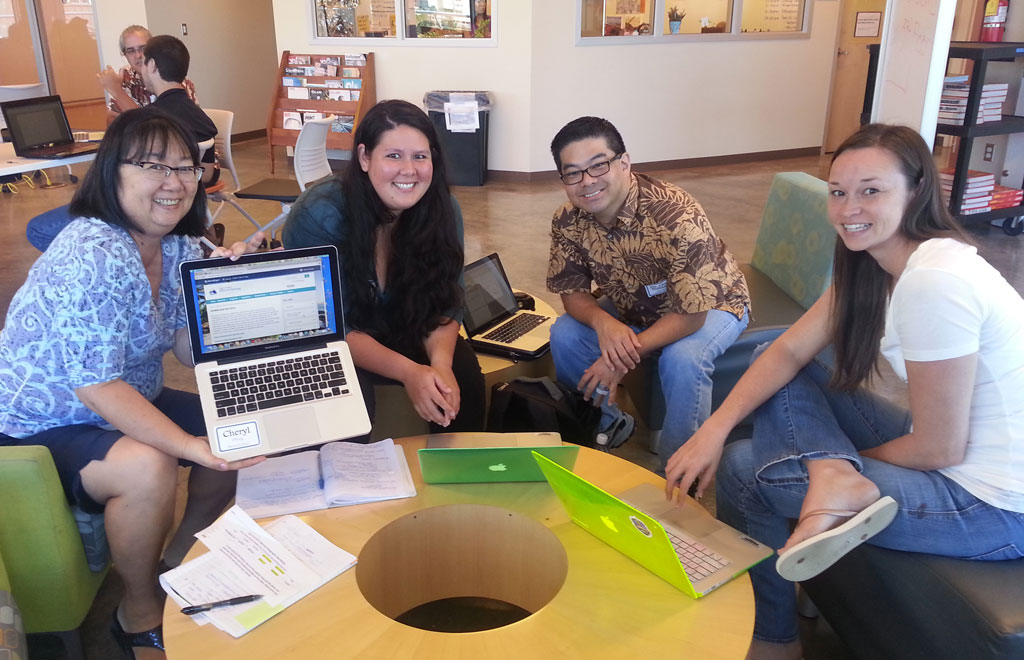
Jul 1, 2015 | Environment
 The recent National Geographic Workshop in Honolulu provided approximately 50 teachers from across the state with a deeper understanding of geography concepts and skills. The National Geographic Society funded the workshop in partnership with Maui Economic Development Board. “In this workshop, the teachers learned that geography is an essential element in the social studies curriculum,” said Robert Sternthall, Lahainaluna High School Social Studies Department. The first speaker, Dr. Hong Jiang, Chair of Geography at UH Manoa, enlightened the educators with case studies on change in Waikiki and the geography of tea as examples of interesting stories that convey geographic concepts. “Daniel Lin of the Pacific Voyaging Society shared how to track the canoes from their website and how to contact the crew,” said Sternthall, noting that a statewide emphasis has been placed on this voyage as a way to teach students in an integrated manner.
The recent National Geographic Workshop in Honolulu provided approximately 50 teachers from across the state with a deeper understanding of geography concepts and skills. The National Geographic Society funded the workshop in partnership with Maui Economic Development Board. “In this workshop, the teachers learned that geography is an essential element in the social studies curriculum,” said Robert Sternthall, Lahainaluna High School Social Studies Department. The first speaker, Dr. Hong Jiang, Chair of Geography at UH Manoa, enlightened the educators with case studies on change in Waikiki and the geography of tea as examples of interesting stories that convey geographic concepts. “Daniel Lin of the Pacific Voyaging Society shared how to track the canoes from their website and how to contact the crew,” said Sternthall, noting that a statewide emphasis has been placed on this voyage as a way to teach students in an integrated manner.
The group was introduced to C3 Framework, a new initiative designed to enhance the social studies curriculum. “It is based on inquiry, using compelling and supporting questions to enhance student engagement and learning,” Sternthall said. MEDB’s K-12 Project Director for Women in Technology, Isla Young, introduced teachers to the exciting world of geospatial technology. Sternthall explained, “She showed us how to avail ourselves of geographic information systems, data and mapping software from ESRI and ARCGIS. This is exciting because now we have access to this technology for our students to broaden their geographic skills in the classroom.”
Brenda Barr of the National Geographic Alliance for Educators instructed the group in the first phase of training to become certified National Geographic educators. “We hope this will strengthen the teaching of geography in Hawai’i,” said Sternthall. On the last day of the workshop the participants spent most of the day working on lessons using the C3 Framework. “We worked in groups according to the content that we are teaching,” Sternthall said. “It was a very productive workshop,” he added. “Not only did we learn new information, but we also brought home many ideas that we can use with our students.”
May 27, 2015 | Environment
 A team of Molokai High School girls sought a solution to eradicating “the largest current threat” to Hawaii’s reefs and earned fourth-place in biochemistry at the 2015 INTEL International Science and Engineering Fair in Pittsburgh, PA. The win on an international stage for 16-year-olds Kea’a Davis, Alexandria Simon and Amber “Momi” Afelin was impressive.
A team of Molokai High School girls sought a solution to eradicating “the largest current threat” to Hawaii’s reefs and earned fourth-place in biochemistry at the 2015 INTEL International Science and Engineering Fair in Pittsburgh, PA. The win on an international stage for 16-year-olds Kea’a Davis, Alexandria Simon and Amber “Momi” Afelin was impressive.
“Science has never been my favorite subject,” Davis acknowledged. “It was always something that’s been hard for me to stay interested in.” But that has since changed and Davis said she’s now seriously considering a science-related career. Afelin, the group leader and a junior who’s graduating a year earlier than her classmates, said she learned the value of determination. “You had to be incredibly self-motivated and dedicated in order to pursue this. For us, science was about solving a problem and we worked really hard to find a solution,” Afelin said. Simon said each of the girls had specific tasks yet all of them supported each other whenever needed. “We became each other’s closest friends, consultants and partners.”
Their project, “Investigating Agar Extraction as a Method of Gracilaria Salicornia Eradication,” attempted to find a solution to eradicate the invasive seaweed also known as “Gorilla Ogo” on Hawaii’s coral reefs. Together they developed a process to extract parts of the seaweed that could be sold as agar, a substance similar to gelatin. Remaining plant material not used in the agar could serve as fertilizer, according to the team’s research. “Essentially we’ve taken a very negative aspect of our reef life,” Afelin said, “and turned it into a product that can be sold in stable markets, creating an economic incentive to fund the seaweed’s own eradication efforts with money left over to pay for manpower.” The three girls were able to conduct their research and experiments with the help of former teacher Scott Hemenway. Financial backing for the girls to travel to the international competition was supported in part through MEDB’s Women in Technology grants from the Office of Naval Research and the County of Maui.

Apr 8, 2015 | Community, Environment, Sustainability
 More than 30 percent of Maui’s energy needs, on average, are being met by renewable energy sources such as wind and rooftop photovoltaic (PV) systems, and the trend continues to rise, making Maui a national and global leader in the adoption of renewable energy. This was just one of the positive observations to emerge from the 2015 Maui Energy Conference + Exhibition that spanned two days at the Maui Arts & Cultural Center last month. More than 300 energy industry leaders from Hawaii, the Mainland and Japan attended and shared ideas on how to better serve customers in today’s rapidly changing power generation and delivery environment.
More than 30 percent of Maui’s energy needs, on average, are being met by renewable energy sources such as wind and rooftop photovoltaic (PV) systems, and the trend continues to rise, making Maui a national and global leader in the adoption of renewable energy. This was just one of the positive observations to emerge from the 2015 Maui Energy Conference + Exhibition that spanned two days at the Maui Arts & Cultural Center last month. More than 300 energy industry leaders from Hawaii, the Mainland and Japan attended and shared ideas on how to better serve customers in today’s rapidly changing power generation and delivery environment.
At the conference, Program Committee member Holly Benz of Schneider Corporation said: “All eyes are on Hawaii.” Benz said outsiders are continuing to closely watch the state and its work on energy issues. “There is a tremendous opportunity for Hawaii to lead, to test and to learn.” Keynote speakers Alan Oshiro, President of Hawaiian Electric Company and Eric Gleason, President of NextEra Energy Hawaii shared perspectives on the acquisition of Maui Electric’s parent company, HEI by NextEra and outlined the benefits that it can bring to customers and Hawaii. NextEra, the largest generator of wind and solar energy in North America, has announced its commitment to lower Hawaii’s high electricity costs.
One of the nine thought-provoking panels, “Focus on the Customer—Maui Style,” discussed proposed changes in Maui’s energy landscape, concluding that these must be transparent to residents and engaging for young people. “In my business,” Cathy Nobriga Kim, vice president of Maui Soda and Ice Works said, “energy is crucial.” When asked how businesses could be involved in renewable energy solutions for Maui, Kim observed that business involvement in pilot projects to develop renewable energy solutions are beneficial. Other panelists said that government and community leaders must step up to explain the changing energy landscape. Information provided to residents must be true and trustworthy; “There needs to be transparency,” one panelist said. The conference was hosted by the Maui Economic Development Board and the Mayor’s Office of Economic Development.





 Imagine a place where the community reflects what is important and precious in each member. Imagine a place where the meaningful work that each individual contributes to the community is healing and inspirational. La‘a Kea Farm on Baldwin Avenue in Pa‘ia is that place. Sitting on 12 acres overlooking the ocean, with double rainbows and majestic white clouds, the farm inspires residents and visitors alike. Founded in June 2000, La‘a Kea, a 501(c)(3) nonprofit organization, provides day and residential programs for youth and adults with intellectual and developmental disabilities. It is the first of its kind in the State of Hawai‘i.
Imagine a place where the community reflects what is important and precious in each member. Imagine a place where the meaningful work that each individual contributes to the community is healing and inspirational. La‘a Kea Farm on Baldwin Avenue in Pa‘ia is that place. Sitting on 12 acres overlooking the ocean, with double rainbows and majestic white clouds, the farm inspires residents and visitors alike. Founded in June 2000, La‘a Kea, a 501(c)(3) nonprofit organization, provides day and residential programs for youth and adults with intellectual and developmental disabilities. It is the first of its kind in the State of Hawai‘i.

 Mama’s Fish House, family-owned by Floyd and “Mama” Doris Christenson, has been buying fish directly from Maui fisherman for over 40 years. These local fishermen, representing a way of life, culture and tradition in Hawai’i, consistently deliver the freshest and finest local Maui seafood. In May 2013, Mama’s Fish House, in cooperation with Maui fishermen and the Western Pacific Regional Fishery Management Council (Wespac), funded and deployed the first of two fishing buoys approximately 30 miles off the northeast shore of Maui. The buoys are technically called a Fish Aggregation Device (FAD) and are anchored to the seafloor at a depth of over 1500 ft. “They are located in deep, off-shore waters that are habitat for pelagic species such as tuna, mahi-mahi, ono, and billfish,” said Mama’s Fish House Marketing Director Karen Christenson. “The concept of a FAD is a small platform or skiff that is anchored to the ocean floor, with a GPS beacon for tracking,” Christenson explained. “The floating buoy attracts the fish, offering some protection for smaller fish that, in turn, attract larger predator fish.”
Mama’s Fish House, family-owned by Floyd and “Mama” Doris Christenson, has been buying fish directly from Maui fisherman for over 40 years. These local fishermen, representing a way of life, culture and tradition in Hawai’i, consistently deliver the freshest and finest local Maui seafood. In May 2013, Mama’s Fish House, in cooperation with Maui fishermen and the Western Pacific Regional Fishery Management Council (Wespac), funded and deployed the first of two fishing buoys approximately 30 miles off the northeast shore of Maui. The buoys are technically called a Fish Aggregation Device (FAD) and are anchored to the seafloor at a depth of over 1500 ft. “They are located in deep, off-shore waters that are habitat for pelagic species such as tuna, mahi-mahi, ono, and billfish,” said Mama’s Fish House Marketing Director Karen Christenson. “The concept of a FAD is a small platform or skiff that is anchored to the ocean floor, with a GPS beacon for tracking,” Christenson explained. “The floating buoy attracts the fish, offering some protection for smaller fish that, in turn, attract larger predator fish.”


 More than 30 percent of Maui’s energy needs, on average, are being met by renewable energy sources such as wind and rooftop photovoltaic (PV) systems, and the trend continues to rise, making Maui a national and global leader in the adoption of renewable energy. This was just one of the positive observations to emerge from the 2015 Maui Energy Conference + Exhibition that spanned two days at the Maui Arts & Cultural Center last month. More than 300 energy industry leaders from Hawaii, the Mainland and Japan attended and shared ideas on how to better serve customers in today’s rapidly changing power generation and delivery environment.
More than 30 percent of Maui’s energy needs, on average, are being met by renewable energy sources such as wind and rooftop photovoltaic (PV) systems, and the trend continues to rise, making Maui a national and global leader in the adoption of renewable energy. This was just one of the positive observations to emerge from the 2015 Maui Energy Conference + Exhibition that spanned two days at the Maui Arts & Cultural Center last month. More than 300 energy industry leaders from Hawaii, the Mainland and Japan attended and shared ideas on how to better serve customers in today’s rapidly changing power generation and delivery environment.